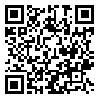Volume 14, Issue 1 And 2 (1-2010)
IBJ 2010, 14(1 And 2): 9-15 |
Back to browse issues page
Download citation:
BibTeX | RIS | EndNote | Medlars | ProCite | Reference Manager | RefWorks
Send citation to:



BibTeX | RIS | EndNote | Medlars | ProCite | Reference Manager | RefWorks
Send citation to:
Kheradmand F, Nourmohammadi I, Modarressi M H, Firoozrai M, Ahmadi-Faghih M A. Differential Gene-Expression of Metallothionein 1M and 1G in Response to Zinc in Sertoli TM4 Cells. IBJ 2010; 14 (1 and 2) :9-15
URL: http://ibj.pasteur.ac.ir/article-1-431-en.html
URL: http://ibj.pasteur.ac.ir/article-1-431-en.html
Fatemeh Kheradmand 
 , Issa Nourmohammadi *
, Issa Nourmohammadi * 
 , Mohammad Hossein Modarressi
, Mohammad Hossein Modarressi 
 , Mohsen Firoozrai
, Mohsen Firoozrai 
 , Mohammad Amin Ahmadi-Faghih
, Mohammad Amin Ahmadi-Faghih 


 , Issa Nourmohammadi *
, Issa Nourmohammadi * 
 , Mohammad Hossein Modarressi
, Mohammad Hossein Modarressi 
 , Mohsen Firoozrai
, Mohsen Firoozrai 
 , Mohammad Amin Ahmadi-Faghih
, Mohammad Amin Ahmadi-Faghih 

Abstract:
Background: Zinc (Zn) as an important trace element is essential for testicular development and spermatogenesis. Molecular mechanism of Zn action in the reproductive system may be related to metal binding low-molecular weight proteins, metallothioneins (MT). Our objective was to determine the effect of Zn on two important isoforms of MT, MT1M and MT1G genes expression on testicular sertoli cells. Methods: Cultured sertoli TM4 cells were exposed to different concentrations of Zn at different time points. Cellular uptake of Zn was tested using flame atomic absorption spectrometry. The cellular viability and gene expression were assessed by MTT and real-time PCR methods, respectively. Results: The treated cells resulted in higher Zn concentration and cellular viability. The expression of MT1M and MT1G genes in the treated cells were greater than those of the untreated cells (P<0.05). In the high dosage treated group (100 and 500 μM), Zn concentration and expression of MT1M and MT1G genes increased three h after treatment MT1G gene expression increased more at sixth h. At 18th h of treatment, the expression of both genes especially MT1G, increased dramatically while Zn concentration decreased. Conclusion: Since the increase of MT1G mRNA was coincident with cellular Zn level, it seems that MT1G has a more prominent role than MT1M in the homeostasis of Zn. In addition, Zn at dosage of 50 μM (pharmacologic concentration) may protect cells by increasing the expression of MT genes at longer periods.
Type of Study: Full Length/Original Article |
Subject:
Related Fields
Send email to the article author
| Rights and permissions | |
 |
This work is licensed under a Creative Commons Attribution-NonCommercial 4.0 International License. |







.png)
